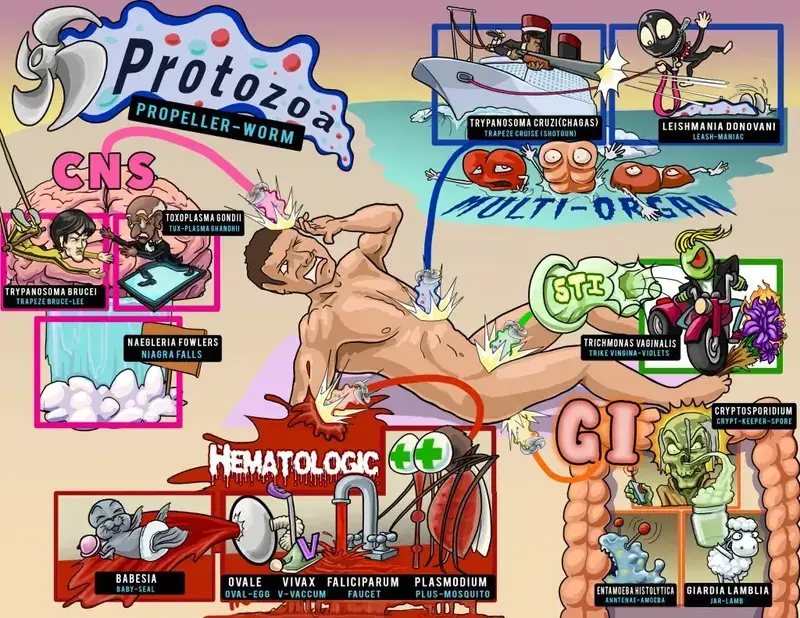If you’re a student studying Protozoa and don’t have flashes of Niagara Falls and baby seals, you’re doing it wrong! A tip for making the most of your classes, courses and exams in 2021, check out Picmonic’s proven mnemonic study tools.

Some topics you will learn in this infographic:
Giardia lamblia: a protozoan parasite that infects the small intestine, causing giardiasis. The life cycle of Giardia begins with a cyst that is excreted in the feces of an infected individual. The cyst can survive for weeks to months, and can contaminate food or water sources.
Toxoplasma gondii: a parasitic protozoa that causes the disease toxoplasmosis. This disease is usually minor and self-limiting in the immunocompetent but can cause serious disease in the immunocompromised.It is also a cause of congenital TORCH infections in a fetus whose mother contracts the disease during pregnancy due to the ability to cross the placenta.
Leishmania donovani: an intracellular parasitic protozoan infection that is transmitted through the bite of the sandfly. It can lead to visceral leishmaniasis, which is characterized by skin pigmentation, spiking fever, and hepatosplenomegaly. Diagnosis is made when amastigotes are visualized in the infected patient’s macrophages, and treatment includes the drugs amphotericin B and miltefosine.
Trichomonas vaginalis: an anaerobic protozoa that causes trichomoniasis, a sexually transmitted infection of the urogenital tract. Unlike other protozoa, this organism does not have a cyst phase and the trophozoites are directly passed from person to person through sexual contact. Rates of infection between men and women are similar.
Cryptosporidium: a protozoan that can cause gastrointestinal disease and severe diarrhea. This organism is capable of completing its life cycle in a single host, resulting in cysts that are excreted in feces. The disease is contracted via ingestion of oocysts in food and water that excyst in the small intestine and cause damage to intestinal epithelial tissue.
Trypanosoma brucei: a flagellated protozoan that causes the disease African sleeping sickness. This disease is transmitted by the tsetse fly which has a painful bite and is endemic in regions of Africa. The disease symptoms occur in two stages. The first is known as the hemo-lymphatic stage and is characterized by fever, headaches, and joint pain. These fevers are usually recurring due to antigenic variation leading to evasion of the immune system.
To learn more, get started with a free Picmonic account.













